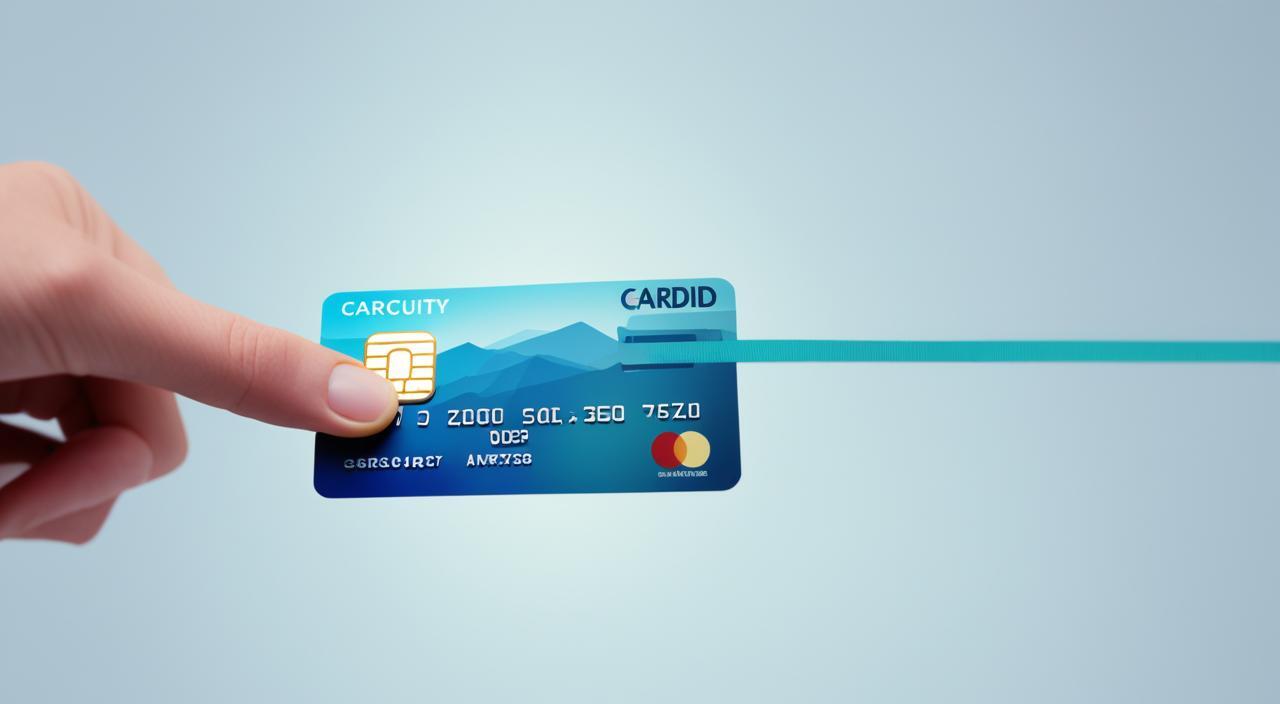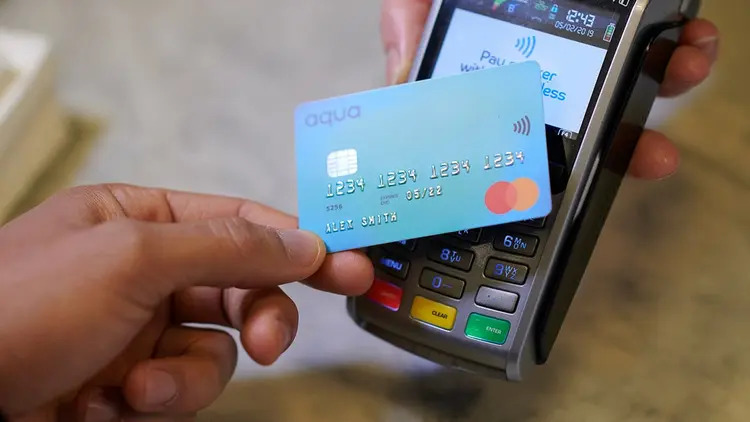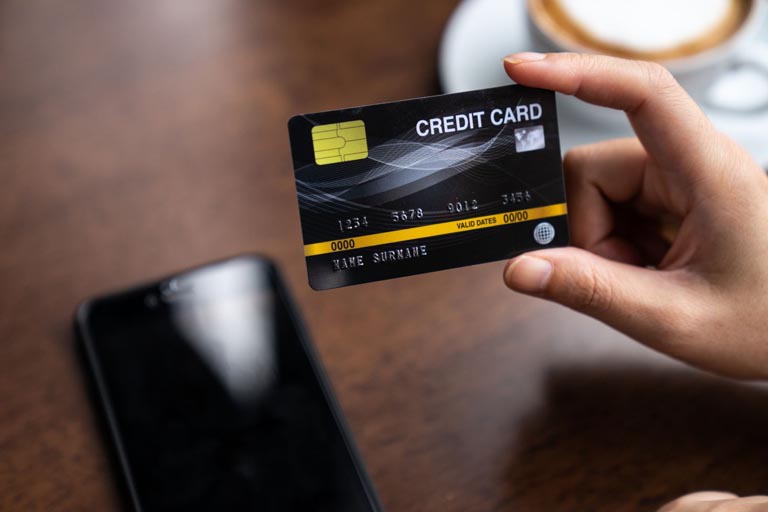
The Ultimate Guide to Carding Methods and Cashing Cards: How to Stay Safe Online
In today's digital world, credit card fraud, or "carding," is a big issue for everyone. It involves using stolen credit or debit card details for wrongdoing. This isn't just dangerous for your money. It can also harm the wider economy.
The risk of data breaches and identity theft is going up. It's vital to know about carding techniques and how to shield yourself. This guide explores the world of carding. We'll look at how cybercriminals get card info and the networks they use to sell it. Armed with this info, you can better protect your data and stay safe.
Key Takeaways
- Carding is a form of fraud where stolen credit or debit card information is used for various illicit purposes, including purchasing gift cards or other goods that can be resold for cash.
- Cybercriminals employ a range of techniques, from hacking payment processing systems to physically skimming card data, to acquire card information.
- Stolen card data and personal information can be sold on specialized online forums and marketplaces, known as "carding sites," where buyers and sellers engage in these illegal activities.
- Carding is often linked to other criminal activities, such as money laundering and potential terrorist financing, underscoring the far-reaching consequences of this type of fraud.
- Businesses and individuals can take proactive measures, such as implementing strong security protocols and staying vigilant, to mitigate the risks associated with carding and safeguard their financial well-being.
What is Carding?

Definition and Key Takeaways
Carding is a type of fraud. It uses stolen credit or debit card details to misuse funds. This fraud might involve buying prepaid cards or gift cards. The main points to remember are that carding targets a person's financial data. Also, there are online places where criminals share stolen card info and tricks.
How Carding Works
Carding begins when a hacker breaks into a business or website's payment system. They get a hold of recently used credit or debit card details. Hackers look for gaps in security or may use tools to copy card data. This step lets them get the information they need to commit fraud.
Terminology: Fullz and Credit Card Dumps
In carding, there's special lingo. Fullz stands for a complete set of personal data. It includes a person's name, address, and an ID. Criminals use this kind of info for identity theft and financial fraud. Meanwhile, a credit card dump is when someone illegally copies a credit card's digital data. They can do this by copying details from the card itself or hacking payment systems.
Acquisition Methods for Card Data
Over time, carding methods have become more advanced. Once, carders used techniques like trashing private information and getting help from insider threats. They would even use BIN attacks to make bank card numbers based on known patterns.
Traditional Methods like Trashing and Insiders
In the past, they would look for thrown-out papers that had credit card info. They also stole mail to get this data. Working with insiders gave them access to secret information, helping them do illegal work.
Modern Hacking and Skimming Techniques
Today's carders use clever hacking and skimming tools. These can be skimmers at ATMs or breaking into online shops and payment systems. They can even target point-of-sale networks for card data.
They also do social engineering attacks. This means they might call hotel rooms and pretend to be from the front desk. They then ask for credit card details as a "security check."
Resale on Carding Forums and Markets
The world of carding is all about selling stolen credit card details and personal info on special forums and markets. Knowing the words and how things work here is key to keeping up with this world.
Bases, Packs, and Valid Rates
Stolen info might be grouped as a "Base" or "First-hand base" if the seller was part of the theft. People who sell these mostly buy lots ("packs") of these from different places. They say the "valid rate" of these, showing how many are likely to work. Cards with more than a 90% valid rate are worth a lot in the carding resale world.
Fullz and Cobs for Identity Theft
The sale of full identity info, or "Fullz," is also big here. It includes important details like social security numbers and addresses. This kind of info makes identity theft more profitable. "Cobs," on the other hand, means changes to billing info. With enough data, the carder can control where items are shipped.
Feedback Systems and Rippers
The carding forums and carding markets often use feedback to spot bad sellers, or "rippers". Rippers are those who don't send what they promise even after taking your money. These feedback and invite policies aim to cut out the scammers from the credit card fraud scene.
Cashing Out Stolen Cards

Carding actors get hold of credit card or debit card details. They turn this data into cash or other things that are easily changed into cash. They often buy prepaid gift cards. These can be sold or used to buy more items, to hide the illegal money.
Purchasing Prepaid Gift Cards
They might buy prepaid gift cards with the stolen details. These cards can then be sold online under market value. This way, they get easy and fast cash.
Reshipping Mules and E-Fencing
Another way is to buy real goods with the stolen information. These goods are sent to reshipping mules who pass them on. Then, the carders sell these goods on sites like eBay. This is called e-fencing. Because it gets a lot of attention, special groups now manage this tricky shipping and selling scheme.
Proxy Setups for Payment Processors
Carders also set up special systems on hacked computers. These systems make it hard for payment processors to tell what they're doing. By doing this, they sneak under the radar and don't get caught. It helps them get around the security meant to catch their scams.
Money Laundering Techniques
Carders often try to change their illegal money into legal cash. They use many ways to do this. A popular old method involved using online payment services such as E-gold and Liberty Reserve.
Back in 2004, a big investigation happened. It looked into the ShadowCrew forum and platforms like E-gold. These sites helped cybercriminals move their money. E-gold was especially favored back then because it was an easy way to send money online.
E-Gold and Liberty Reserve Services
In 2006, Liberty Reserve started becoming well-liked among cybercriminals. But, the U.S. government closed it down in 2013. This action hurt many carders because they could no longer use Liberty Reserve to turn their money clean.
Bitcoin and Other Cryptocurrency
These days, some carders prefer using cryptocurrencies like bitcoin for their illegal deals. Cryptocurrencies allow them to hide the source of their money. But, police are getting better at watching and stopping these illegal money movements.
Traditional Wire Transfers
Others stick to older ways, like sending money through wire transfers. They use services such as Western Union, MoneyGram, and WebMoney. These methods are still common among those who do carding and other financial crimes.
cashing card, ccshop, cvv carding, carding methods, cvvshop, dump shop, cc dumps
In today's world, cybercrime is always changing. Thieves have gotten better at getting and using credit card info. This has led to more activities in cvvshop, dump shop, and cc dumps.
Stealing and selling card info, known as credit card dumps, is big business for criminals. They get this info by copying cards or by hacking into payment systems. Unfortunately, many people worldwide have been hit by these attacks.
Skimming is another way thieves steal your credit card info. They place hidden readers in ATMs or gas pumps. By doing this, they collect millions of card numbers. Also, they sometimes hack into stores' payment systems to get even more info.
After getting credit card details, criminals sell them or use them to buy things online. This keeps the ccshop and cvv carding markets booming. Big hacks, like the ones at Capital One and Equifax, have made things worse by exposing lots of people's info.
Protecting yourself is key since the world of cashing card and cc dumps is always changing. Watch out where you share your card details. Look for suspicious things on payment devices. Also, check your credit card bills often. If you're a victim, quickly contact your card company, freeze your account, and get new cards.
Related Services on Carding Sites
Carding sites sell stolen credit card details. But, they also offer other services. This includes tools to help with criminal activities connected to carding and financial fraud.
Malware, Phishing Kits and Spam Lists
At these forums, one can find many tools for computer crimes. Phishing kits, malware, and spam lists are examples. With these, users can get more personal and financial data from people. The forums share the latest fraud how-tos, free or for sale to members.
Fraud Tutorials and Hosting
Hosting services are also available on some carding sites. They use botnet-based "fast flux" to avoid legal problems. This setup is great for hosting fraud guides and techniques for laundering money.
Account Selling for PayPal, Uber etc.
Furthermore, these sites sell more than just credit card details. They offer accounts for services like PayPal, Uber, Netflix, plus, loyalty cards. Also, logins for big sites and institutions are for sale. These include banks, universities, and industrial systems, for illegal use.
Gift Card Fraud and Tax Refund Tactics
The world of carding is always changing. A big trick they use is gift card fraud. They snatch gift cards by tricking stores with bots or by using stolen credit info. Then, they sell these cards for money fast.
There's also this cunning plan called tax refund fraud. Here, they first steal personal info to get prepaid cards for quick cashing out. With this scam, crooks file fake tax returns, put the refunds on the cards, and thus clean their dirty money.
These methods show how crafty and flexible criminals are. They're always looking for new ways to launder money from their crimes. To fight back, stores and banks need to be extra attentive, especially against these rising gift card fraud and tax refund fraud schemes.
Evolution from Early BBS Days
Carding history began in the 1980s with dial-up BBS. People started using the word "carding" for illegal credit card fraud online. Over time, these online crimes grew in complexity and reach.
Operation Sundevil Crackdown
In 1989, the US Secret Service launched Operation Sundevil. It aimed at BBS groups committing credit card fraud and other cybercrimes. This event was key in the government's fight against carding history.
Emergence of AOHell and AOL Fraud
Around the mid-1990s, AOL's popularity increased along with AOHell. This program helped cybercriminals trick new users into giving up their info, including credit card details. AOL didn't check if the card numbers were valid until after 1995, making fraud easier.
1999 CD Universe Extortion Case
In December 1999, a Russian teen called Maxim caused a big stir in carding history. He stole 25,000 CD Universe customers' card data and asked for $100,000 not to leak it. When the money wasn't paid, he posted the card data online. This incident showed how cybercriminals were getting smarter and bolder.
Emergence of Major Carding Groups
Over time, the carding world saw many important cybercrime groups start up. They all made a big mark on online carding. For example, "The Counterfeit Library" was a key player in the early 2000s. It not only sold stolen credit card info but also fake academic degrees.
Many people from The Counterfeit Library later joined bigger and more advanced carding groups. This happened until The Counterfeit Library shut down in September 2004. This shift shows how carding groups are always changing and working together.
Russian and Ukrainian Carders
In 2001, Russian and Ukrainian carders also made a big entrance. These groups, mostly made up of Russian-speaking hackers, became important in the carding world. They quickly became strong competitors in global cybercrime.
Shadowcrew Organization
2004 was a turning point for carding groups with the ShadowCrew forum case. Law enforcement took down this hub for sharing stolen credit card details. The ShadowCrew investigation also shined a light on E-gold. This was a popular online money service among carders back then.
The appearance and growth of these major carding groups have changed the world of financial fraud and online crime. Though effort is made to fight these threats, staying ahead of the changing methods of these criminals is a challenge.
Protecting Against Carding Fraud
Businesses and consumers face a growing threat from carding fraud. Cybercriminals aim to steal credit and debit card info. Using tools like address verification and IP geolocation can stop fraud at the checkout.
Address Verification and Geolocation
AVS (Address Verification System) checks the billing address. It compares it to the one the credit card company has on file. A mismatch can signal fraud. IP geolocation looks at the user's location. It then compares it to the billing address. This provides an extra way to catch fraud.
CVV, MFA and CAPTCHA
A CVV (Card Verification Value) is a key code on the back of a credit card. It boosts security for online buys. MFA (Multifactor Authentication) uses multiple ways to confirm the user's ID. CAPTCHA stops automated attacks with its puzzles.
Velocity Checks and Fraud Detection
Velocity checks keep an eye on how many times a card or visitor tries to buy something in a short time. Lots of buys quickly could mean carding fraud. This alerts a closer look. Advanced fraud detection spots unusual buying patterns. It can stop suspicious activities before they harm.
Law Enforcement Investigations
The law enforcement community has intensified its fight against carding in recent years. Operation Cardkeeper targeted the ShadowCrew forum. This forum was a central place for carders and credit card fraud.
In 2004, an investigation began into ShadowCrew. This also shined a light on E-gold, an online money transfer service. E-gold froze assets from "high risk" countries, making it face more financial rules.
Recent High-Profile Cases
Big investigations have gone after data breaches and carding, too. Big cases include DSW, CardSystems Solutions, and TJX Companies. They saw millions of accounts breached, showing a huge risk from carding.
This shows the fight against carding is ongoing. Both companies and people need to be careful. As cybercriminals change, the police must keep up to protect everyone's money and safety.
| Company | Impacted Accounts | Year |
|---|---|---|
| DSW | 1.4 million | 2005 |
| CardSystems Solutions | 40 million | 2004 |
| TJX Companies | 45.7 million | 2007 |
Industry and Legislative Responses
In recent years, the danger of identity theft and carding fraud has grown. The industry response and legislative response have also changed to fight these threats. Companies are using new security steps like address verification and multifactor authentication to protect their customer's financial details from carders.
Payment Card Industry Data Security Standards
The Payment Card Industry Data Security Standards (PCI DSS) are key in how the industry deals with fraud. Major credit card companies created these standards. They say what merchants and providers must do to safely use and keep payment data.
State Data Breach Notification Laws
A lot of states have made laws like California's data breach notification laws. These rules mean companies have to tell people if a data breach happens. This helps make sure companies keep sensitive info safe and lets people act to protect themselves.
Because cybercrime keeps changing, it's important for everyone to work together. Industry and lawmakers must keep up with new carding tricks. Doing so will help protect people's money and information.
Linking Carding to Other Crimes
Carding is more than just financial fraud. It's been tied to other criminal ventures, like terrorism funding and drug trade. People making malware, phishing schemes, skimming, and exploiting are often after money in this shadowy realm.
Potential Terrorism Financing Links
Carding helps with the money for terrorist activities. This happens when they buy cards and other money tools. Those underground carding sites may aid terrorism’s money needs, whether they realize it or not.
Possible Drug Trafficking Ties
Carding and drug trafficking can mix too. Profits from carding might help buy and move illegal drugs. Carders could also use their platforms to clean money from drug deals.
The link between carding, terrorism funding, and drug trafficking shows we need to be extra careful. Law enforcement, banks, and the cyber world must work together to stop these crimes.
Conclusion
The world of carding is complex and always changing. Carders have gone from using dial-up systems to using sophisticated hacks today. Their main aim has always been the same - to use stolen financial info for profit.
Carding might sound cool, but it's illegal and can cause big problems. It can hurt both businesses and people. To stay safe, everyone needs to be careful and use strong security measures.
We hope you understand carding better now. It’s important to stay smart and protect yourself from these crimes. Being active and informed is the best way to stay safe from carding and fraud.
For more information please visit: Carding Methods
FAQ
What is carding?
Carding is a type of fraud. It uses stolen credit info to charge prepaid cards. It also buys gift cards or supports other illegal activities. This happens online, where criminals share stolen info and tips.
How does carding work?
Hackers break into a store's or website's system. They get lists of recent credit or debit card transactions. Then, they find ways to copy card information. This can be through software hacks or using special devices to copy the magnetic strip.
What is the terminology used in carding?
In carding, "Fullz" means a complete set of someone's info. This includes their name, address, and ID. A "credit card dump" is when a criminal illegally copies a credit card digitally or physically.
What are the traditional and modern methods of acquiring card data?
Old methods include looking through trash or stealing mail. Newer methods use skimmers on ATMs and hacking into websites. Criminals might also fake websites to steal card info or trick people into giving it over the phone.
How is the stolen data resold on carding forums and markets?
Stolen data is sold online in various ways. Depending on the amount and type of info, it has different values. Sellers use terms like "Base" to attract buyers. They might offer data checks to prove the info's accuracy. Additionally, very detailed information like "Fullz" can fetch higher prices because it's more useful for serious identity theft.
Highly risky but valuable are "Cobs," information that can change the card's billing and shipping addresses. This allows the criminal to order items online without the card owner knowing.
How do carders cash out the stolen cards?
Funds are withdrawn by converting them to pre-paid cards or gift cards. Goods could also be bought and resold, mainly online. Yet, business practices have adapted. Criminal groups have formed focusing just on reshipping stolen items.
They adapt by using proxy servers on hacked computers to avoid detection. This makes it easier to pass online payment security checks.
What money laundering techniques are used by carders?
For making stolen money appear legitimate, carders use services like Western Union or WebMoney. They've also turned to digital currencies like bitcoin. However, this can draw law enforcement attention.
What other services are provided on carding sites?
Carding forums offer a wide range of illegal products and services. This includes tools for hacking, spreading malware, or sending spam. They also share guides on how to commit fraud or gain unauthorized access to sensitive systems.
These sites are often well-protected, using complex methods to stay hidden online. They sometimes sell access to private accounts in big organizations, enabling further fraud. This highlights a dangerous trend towards more sophisticated criminal activity.
How has carding evolved over time?
Carding has been around since the dial-up internet days. Early forms were seen on BBSes in the 1980s. The '90s brought new challenges with the popularization of the internet.
The tools have advanced, making fraud more complex. Today, it is part of a broad underground economy that stretches across the globe.
How can carding fraud be prevented?
To stop carding, safer online payment practices are essential. Tools like IP geolocation and CVV codes help spot fraud early. Strong password protection and regular security updates also make a big difference.
There are strict rules for online sellers that help protect potential victims. Also, laws requiring companies to inform the public of data breaches make us all safer.
How is carding linked to other crimes?
Carding is often a step towards other major crimes. It can fund terrorist activities or the illegal drug trade. By preventing carding, we can help stop these larger threats.



